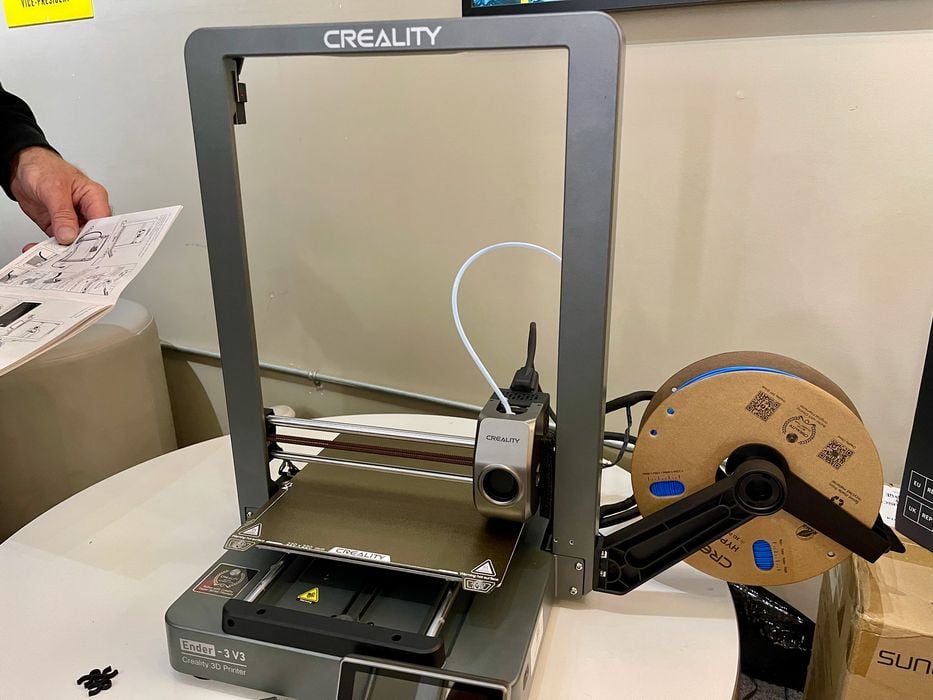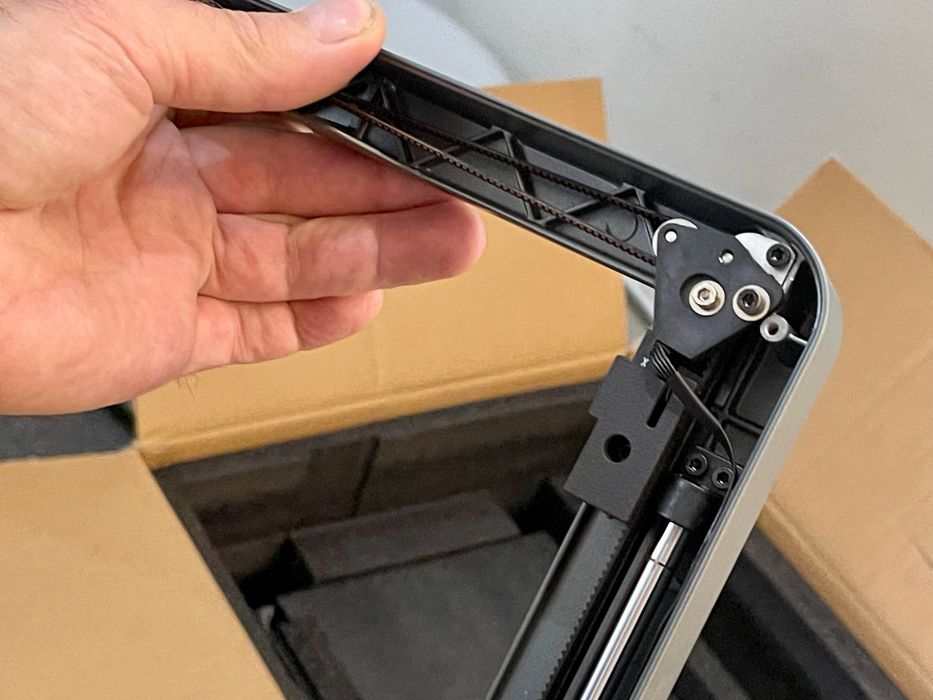
We were privileged to give the Creality Ender-3 V3 3D printer a full test.
This is part one of a three part series, please read parts two and three.
Creality Ender-3 V3 3D Printer Background
Creality has been producing desktop 3D printers for a very long time now, and perhaps has the most models of any manufacturer. They remain one of the largest producers on the planet, and their current flagship 3D printer is the Ender-3 V3.
The Ender-3 V3 is nominally part of the famous Ender-3 line, but so much has changed on this device it almost deserves a new name, as you will see.
Creality Ender-3 V3 3D Printer Specifications and Features
While the Ender-3 V3 retains the classic Ender-3 specs, such as an open gantry design, 1.75mm filament format, 300C hot end, automated calibration, flexible build plate, direct drive extruder, and a build volume of 220 x 220 x 250 mm, there are quite a few more innovations hidden in the device.
Like most desktop 3D printers of recent months, the Ender-3 V3 is a high speed device. It can print as high as 600mm/s — but when using 0.1mm layers. Its acceleration is a very healthy 20,000 mm/s/s. The high speed is obtained through a combination of Klipper-style firmware that compensates for vibration, advanced cooling and a robust motion system.
Creality says the Ender-3 V3 supports 3D printing of a reasonably wide set of materials, including PLA, TPU, PETG, ABS, PLA-CF, PETG-CF, and even CR-carbon material.
The advanced cooling system is interesting. It has dual fans for near-instant material cooling, which is quite important for high speed 3D printing. The fans have what Creality calls “Dynamic balancing”. The front part cooling fan and the hot end cooling fan are dynamically balanced by accurate weight adjustment, so they are less likely to wobble.
The motion system is the most interesting feature on the Ender-3 V3: it’s a CoreXZ machine. No, it’s not a CoreXY machine, it’s a CoreXZ. This means that the XZ plane of motion uses the unusual core system of belts and motors that reduces toolhead weight, also useful for high speed operations.

Because of the CoreXZ motion system, the machine doesn’t have the traditional threaded rods to raise and lower the build platform. Instead it’s all done with belts and smooth rods, as you can see here. It is supposed to provide smoother Z motion, and less wobbly than prior threaded rod designs.
We had never tested a CoreXZ machine and were quite interested to see how it works.
The Ender-3 V3 is also a connected machine. It includes WiFi networking, which can connect to Creality Cloud and smartphone apps for remote monitoring and control. You can even launch jobs directly from your phone from Creality Cloud without the need for slicing software.
One glance at the Ender-3 V3 shows attractive curves around every corner — the edges and corners on the 3D printer are softened with curves making the printer more aesthetically pleasing than many others we have seen.
This is part one of a three part series, please read parts two and three.
Via Creality
